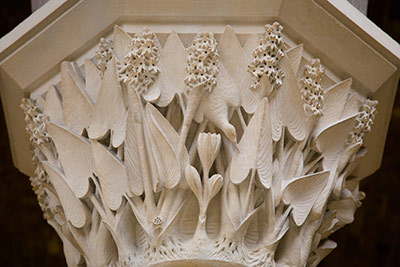Oxford University Museum of Natural History was built at the interface of science and art, with John Ruskin and the Pre-Raphaelite Brotherhood working alongside geologists, botanists and medics in its design and construction.

In 2016, the museum returned to its artistic heritage with a year-long programme of arts activities entitled Visions of Nature. In collaboration with John Holmes from the University of Birmingham and Janine Rogers from Mount Allison University, it hosted a residency for three poets, published a poetry anthology, and held a programme of events showcasing the museum’s architecture and design and the role of art in science from the middle ages to the present day. Over the course of the year it held four substantial art exhibitions inspired by its collections, ecological concerns and natural history more widely, including the hugely popular Microsculpture photography exhibition, which has since toured all over the world. The public too were invited to submit their own visions of nature in pictures and poems.
Building on the success of Visions of Nature, the museum now commissions new artworks to complement each of its temporary science exhibitions. In 2019 it launched a second year of arts events to celebrate Ruskin’s bicentenary called Ruskin 200. Envisaged as a continuation of the Visions of Nature theme and again co-curated with Holmes, this included drawing workshops and competitions, small scale exhibitions, public talks and a Victorian soiree themed around Ruskin’s many scientific and ecological interests. The same year saw the poets from the original Visions of Nature project return to the museum, first to read new poetry at an Art/Science extravaganza co-organised with the environmental activist group Extinction Rebellion and then for the performance of a song-cycle based on their poems as part of the Oxford Lieder Festival. Visions of Nature has now become a persistent strand within the museum’s public engagement, with art shaping its exhibitions and displays, enriching its interpretations of science and nature, and helping to engage new audiences. To celebrate its 160th anniversary, in October 2020 the museum opened ‘Truth to Nature’, a new temporary exhibition co-curated with Holmes, looking at the connection between art and science at the museum’s founding and at how, in the twenty-first century, the same connection has been revived to address the challenges of climate change and biodiversity loss and the need to cultivate diversity within science.
Image: © Oxford University Museum of Natural History (photograph: Scott Billings)